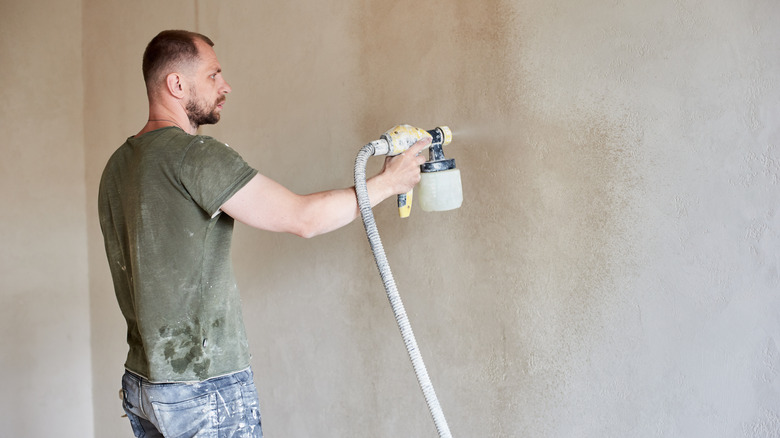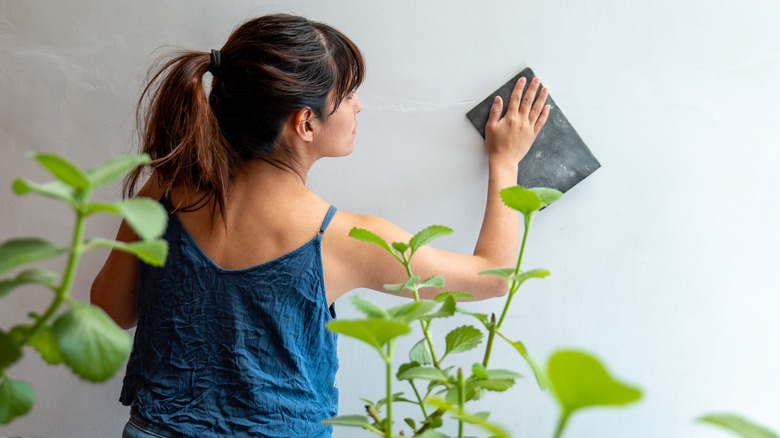The Simple Hack That Makes Paint Overspray Disappear For Flawless Results
If you have ever tried getting a perfect finish when using a paint sprayer tool, you know that sometimes there are annoying little patches of overspray that can ruin the seamless look you had in mind. It seems like no matter how careful you are, those stubborn little streaks and dots appear like uninvited guests at your painting party. But don't worry; there's a simple hack that will help you banish overspray and achieve flawless results. And no, it's not a secret potion or some fancy gadget — just a wet sanding sponge.
To use a wet sanding sponge to save the day, first, let the paint dry completely. Once it's dry, grab your wet sanding sponge and gently sand over the overspray. Don't be tempted to go wild — just lightly sand it down until the surface feels smooth. You can even feel it with your fingers to check if it's even. Wipe away the dust with a damp cloth or use a baby wipe hack to clear any debris, and your surface is prepped. Now, just apply your paint again. It's like the overspray never happened.
This wet sanding sponge trick works so well because wet sanding is gentler on your surface than dry sanding. When you use a dry sanding sponge, the friction creates tiny scratches on the surface, which is not ideal for a flawless finish. Wet sanding, however, uses water to lubricate the process, which helps prevent the abrasive material from damaging the surface.
The usual suspects of paint overspray
Paint overspray isn't just a freak accident; it results from a few common mistakes. First up, the wrong use of a spray gun. If you are too far from the surface, too close, or spraying at an angle, the paint can splatter in unintended areas. The ideal distance between the spray gun and your work surface is usually between 6 and 14 inches, depending on the type of gun and the paint you're using. Testing your spray pattern on a scrap piece of material to get a feel for the proper distance and speed before you hit your project is a good tip to ensure you achieve the desired look.
Another reason overspray occurs is because the paint may be too thin. While thinning your paint to make it easier to apply might seem like a good idea, doing it in excess can actually cause problems. Thinned paint has a finer mist when sprayed, making it more likely to settle in areas you don't intend to paint. This is why it's essential to thin your paint to the recommended consistency for your spray gun and project.
Lastly, painting in cold conditions is a big no-no. When it's too chilly, the paint won't dry properly, which means it stays wetter longer and is more likely to get blown around. Cold air can also affect the consistency of the paint, making it prone to splattering and overspray. If you can, try to paint in warmer temperatures. If you can't control the weather, factor in how long it really takes for paint to dry and consider adjusting your technique.

